Marshall AS100D Handleiding
Marshall
Gitaarversterkers
AS100D
Bekijk gratis de handleiding van Marshall AS100D (6 pagina’s), behorend tot de categorie Gitaarversterkers. Deze gids werd als nuttig beoordeeld door 127 mensen en kreeg gemiddeld 4.9 sterren uit 64 reviews. Heb je een vraag over Marshall AS100D of wil je andere gebruikers van dit product iets vragen? Stel een vraag
Pagina 1/6


1
From the Chairman
I would like to thank you personally for selecting the AS100D,
Acoustic Soloist combo.
The Marshall name has been associated with many fine products
over the years and our commitment to quality remains as constant
today as it did at the birth of Marshall Amplification, back in 1962.
In the case of the Acoustic Soloist amplifier range, much time and
research has gone into making their sound as natural as possible.
The design team, being guitarists, fully understand the needs of the
player and have brought their expertise fully to bear on these
products.
The AS100D also marks a significant milestone in Marshall
amplifier history as it was the first model to carry on board digital
effects, to give you the highest possible sound quality. You can also
rest assured that the Marshall hallmarks of design and engineering
excellence come as standard, ensuring that this amplifier will stand
the test of time, even after constant use.
I strongly suggest that you read this handbook carefully before
using your new amplifier, then keep it on hand for future reference.
I am certain that you will derive great enjoyment from your
Marshall Acoustic Soloist combo and wish you every success with it.
Yours Sincerely,
English
English
Introduction
The AS100D is a comprehensively featured 100 Watt combo amplifier, specially designed for use with a variety of
acoustic instruments. Between its four channels, this combo has the flexibility to handle instruments with piezo
transducers or magnetic pick-ups, plus microphones for both vocal and instrument reproduction. Its 2 x 50 Watt
stereo configuration gives you enough power to perform on stage with superb clarity, while the provision of a
balanced line out allows direct connection to an external PA system for larger concert venues.
The built-in digital effects add an entirely new dimension to the range of sounds available. If you want to add
further effects, then there is a parallel effects loop with level control.
One of the most difficult aspects of amplifying acoustic instruments is feedback. To help you eliminate this, the
AS100D features several ‘anti-feedback’ controls, including a Phase switch for each channel and frequency
controllable Notch Filters with selectable extra depth for channels 1 and 2. It also features a fourth channel suitable
for CD/MD, tape player or a drum machine if needed.
For clear and detailed performance, the AS100D is loaded with two 8" speakers and two high fidelity polymer dome
tweeters. There is also an internal limiter which allows you to push the maximum level from the stereo 50 Watt
output stage, whilst remaining distortion free.
Compact and portable, the AS100D offers great flexibility and is the ideal amplifier for the acoustic player who
wants the highest quality performance and natural tonal reproduction.
Channel 1 - Acoustic Instrument
1. Input Jack
This input will accept a normal mono jack lead
from a piezo transducer or magnetic pick-up.
Plug the lead from your guitar in here to connect
you to channel 1.
This is also a stereo input designed specially for
those acoustic instruments which feature a variety
of pickups (e.g. magnetic and transducer) fed
through a single stereo cable. In this mode the
signal from the ring of the stereo jack is
automatically routed through to channel 2 by
selecting the Link Ch 1 switch (item 11). This
allows separate pre-amp control for the two
different pick-ups.
2. Phase Switch
Reverses the phase of the signal to cut out
unwanted resonances caused by the instrument
and speakers being in phase.
Ensure that you test this in the position where you
will actually perform.
3. Gain Switch
Increases the amount of gain to the input and is
extremely useful for boosting the signal of pick-ups
with very low output levels.
4. Volume Control
Adjusts the volume level of channel 1.
5. Bass Control
Adjusts the amount of bottom end or bass in your
sound. Too much bass can cause unwanted
feedback, therefore care should be taken when
setting this control. The best position to start is 12
o’clock, then adjust from there as desired.
6. Parametric Mid Control
Cuts or boosts the mid-range of your sound. This
control works in conjunction with item 7 (mid
frequency control) to give the maximum possible
control over the all important mid-range of your
instrument’s tonal spectrum.
7. Mid Frequency Control
Adjusts the frequency of the mid-range control
(item 6).
8. Treble Control
Adjusts the high end or treble frequencies in your
tone. Again, care should be taken when setting this
control as too much treble will cause high pitched
feedback. The starting point of the 12 o’clock
position is best.
Channel 2 - Acoustic Instrument and
Microphone
9. Instrument Input
Mono jack input. Plug the lead from your guitar in
here to connect to channel 2 only.
Front Panel Features
The AS100D provides two separate pre-amps to capture the best sound out of your acoustic instrument.
Having two channels dedicated to acoustic instruments allows you to mix two types of commonly used pick-up
(piezo, magnetic or microphone), between either two mono jacks or a stereo jack.

10. Microphone Input
XLR type socket to connect a microphone to
channel 2.
11. Link Channel 1 Switch
Switch to link channel 2 (when an instrument with
a single stereo jack is connected) to the stereo
input of channel 1 (see item 1). Channel 2 level
and EQ settings will affect the signal connected to
the ring of the stereo input jack. (item 1). Refer to
block diagram.
12. Contour Switch
Changes the contour of the channel EQ by cutting
the mid-range by a predetermined amount.
13. Phantom Switch
If you require phantom power for your condenser
microphone, pressing this switch provides +15V.
14. Phase Switch
Reverses the phase of the signal to cut out
unwanted resonances caused by the instrument
and speakers being in phase. This can considerably
reduce the amount of low frequency acoustic
feedback.
Ensure that you test this in the position where you
will actually perform.
15. Volume Control
Adjusts the volume level of channel 2.
16. Bass Control
Adjusts the amount of bottom end or bass in your
sound. Too much bass can cause unwanted
feedback, therefore care should be taken when
setting this control. The best position to start is
12 o’clock, then adjust from there as desired.
17. Treble Control
Adjusts the high end or treble frequencies in your
tone. Again, care should be taken when setting this
control as too much treble will cause high pitched
feedback. The starting point of the 12 o’clock
position is best, then adjust from there to suit your
own preference.
Channel 1 and Channel 2 Mix
Anti Feedback Section
18. ‘On’ Switch
Activates the Anti Feedback filters (items 20 & 21)
for both acoustic instrument channels.
19. Depth Switch
Increases the depth for both notch filter controls
20 & 21.
20. Rotary Feedback Filter (Sweep 1)
Sweeps the band of frequencies most likely to
cause body resonance (the main offending
feedback frequencies) from 50Hz - 250Hz and
reduce it when selected.
21. Rotary Feedback Filter (Sweep 2)
Provides a second sweep of a broader band of
frequencies (60Hz - 650Hz) to help remove a
second offending frequency.
TIP: In order to select and eliminate the offending
frequencies, select the point where the feedback
just appears and move the frequency control until
it disappears. Next, increase the gain level until the
feedback reappears and adjust the frequency again,
then reduce the level slightly.
Channel 1 and Channel 2 Mix
Effects Switches
22. Internal Effects Switch
Activates the internal stereo digital effects section
for the acoustic instrument channels.
23. External Effects Switch
Activates the external effects loop for the acoustic
instrument channels.
Channel 3 - Microphone
24. Microphone Input
XLR type socket to take the input from an external
microphone for either vocal or instrument
reproduction.
25. Phase Switch
Reverses the phase of the signal to cut out
unwanted resonances caused by the instrument
and speakers being in phase.
Ensure that you test this in the position where you
will actually perform.
26. Phantom Switch
If you require phantom power for your condenser
microphone, pressing this switch provides +15V.
27. Volume Control
Adjusts the volume level of channel 3.
28. Bass Control
Adjusts the amount of bottom end or bass in your
sound. Too much bass can cause unwanted
feedback, therefore care should be taken when
setting this control. The best position to start is
12 o’clock, then adjust from there as desired.
29. Treble Control
Adjusts the high end or treble frequencies in your
tone. Again, care should be taken when setting this
control as too much treble will cause high pitched
feedback. The starting point of the 12 o’clock
position is best, then adjust from there to suit your
own preference.
30. Internal Effects Mix Control
Selects the amount of effect from the built-in
digital effects for channel 3 only.
32
English
English
31. External Effects Mix Control
Selects the amount of effect on channel 3 from any
external effects processor connected through the
FX Loop.
Channel 4 - Auxiliary
32. Phono Inputs
Left and right phono sockets for connection to
CD/MD/tape player, drum machine or other backing
equipment. This channel works in stereo.
33. Volume Control
Controls the volume level of the auxiliary channel.
Stereo Digital Effects
34. Program Select Control
Rotary control to select one of the 16 digital effects
programs.
35. Parameter Adjust Control
Adjusts the main parameter of the effect selected
by Program Select Control (item 34). The main
parameter is decay time for all Reverb and Delay
programs. For Chorus, Flange and Modulation
programs, it is the Speed.
36. Effects Level Control
Controls the amount of the digital effects signal in
the mix.
Master Volume
37. Master Volume Control
Controls the overall volume level of the AS100D.
38. Power Switch
This is the On/Off switch for the mains power to
the amplifier. When it is switched ‘On’, the switch
will light. Please ensure the amplifier is switched
off and unplugged from the mains electricity
supply before being moved.
Rear Panel Features
1. Mains Input
Your amp is provided with a detachable mains
(power) lead that is connected here. The specific
mains input voltage rating that your amplifier has
been built for is clearly marked on the back panel.
Before connecting for the first time, please ensure
that your amplifier is compatible with your
electricity supply. If you have any doubts, please
get advice from a qualified person. Your Marshall
dealer can help you in this respect.
2. Footswitch Jack Socket
For connection to the supplied remote footswitch
which provides switching of both internal and
external effects.
3. Effects Send
Sends the signal from the AS100D to the input of
an external effects processor.
4. Effects Level Control
Rotary control to adjust the external effects return
level.
5. Stereo Effects Return
Left / Mono and Right returns to accept the output
from an external effects processor. If the processor
is mono (such as a floor pedal), connect to the
Left / Mono return jack.
6. D.I. Outputs
Left and Right direct outputs, fully balanced for
connection to an external PA mixing desk.
7. Line Out
Unbalanced Left and Right direct outputs for
connection to recording or other outboard
equipment.
Product specificaties
| Merk: | Marshall |
| Categorie: | Gitaarversterkers |
| Model: | AS100D |
Heb je hulp nodig?
Als je hulp nodig hebt met Marshall AS100D stel dan hieronder een vraag en andere gebruikers zullen je antwoorden
Handleiding Gitaarversterkers Marshall

16 September 2023

16 September 2023

16 September 2023

16 September 2023

16 September 2023

16 September 2023

16 September 2023

16 September 2023

16 September 2023

16 September 2023
Andere handleidingen Marshall
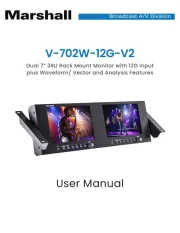
12 Augustus 2025
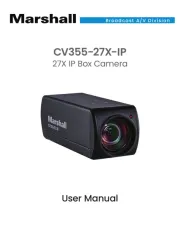
5 Augustus 2025
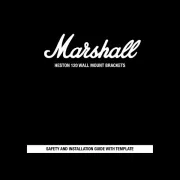
5 Augustus 2025
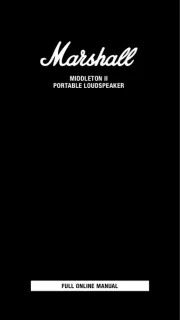
2 Augustus 2025
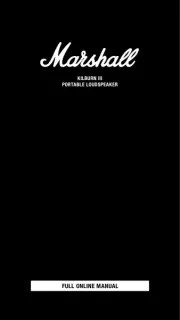
5 Juli 2025
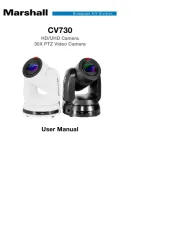
12 Juni 2025
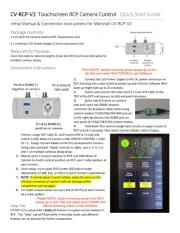
11 Juni 2025
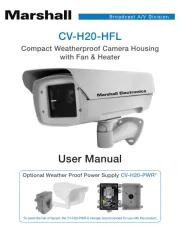
11 Juni 2025
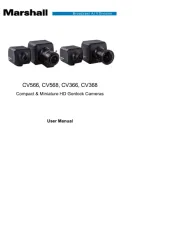
11 Juni 2025
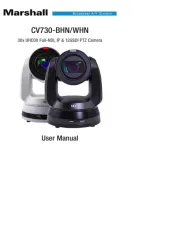
11 Juni 2025